Soundings: Germaine Koh
-
Germaine Koh
ArtistGermaine Koh is a Canadian artist based in Vancouver, unceded ancestral territories of the Musqueam, Squamish and Tsleil-Waututh First Nations. Her work often adapts familiar situations, everyday actions and common spaces to encourage connections between people, technology and natural systems. Her ongoing projects include Home Made Home (http://homemadehome.ca), an initiative to build and advocate for alternative forms of housing, and League (http://league-league.org), a participatory project using play as a form of creative practice. She was the City of Vancouver’s first Engineering Artist in Residence in 2018-20, and is scheduled to be the Koerner Artist in Residence at the University of British Columbia in 2021. In Summer 2020 she worked with the Belkin staff to help shape COVID-19 reopening protocols
Read More
Germaine Koh
Crowd Shyness: the sound of its making, 2020
hollowed cedar stump, drum head, hardware, resin
Commissioned by the Morris and Helen Belkin Art Gallery
Collection of the artist
On rainy days, set it outside to receive the rain.
Play along if you wish, letting the rain take the lead.
Germaine Koh’s drum is made from one of the cedar tree stumps she first brought to site for use as physical distancing stations. She worked with Belkin staff during Summer 2020 to develop COVID-19 safety and visitor interaction protocols that recognized the importance of collective care and teamwork. That work was guided by the metaphor of crown shyness, the phenomenon in which trees grow with distinct space between themselves, to avoid spreading pests and damaging each other. In the context of COVID, the human equivalent is “crowd shyness” — keeping one’s distance as a form of conscious citizenship. Koh has now adapted one of those stumps to give it voice, by hollowing it and fitting it with a drum head that will sound when it is left out in the rain.
Germaine Koh’s work is part of Soundings: An Exhibition in Five Parts at the Morris and Helen Belkin Art Gallery (September 8-December 6, 2020).
Photos: Rachel Topham Photography
Videos: Germaine Koh
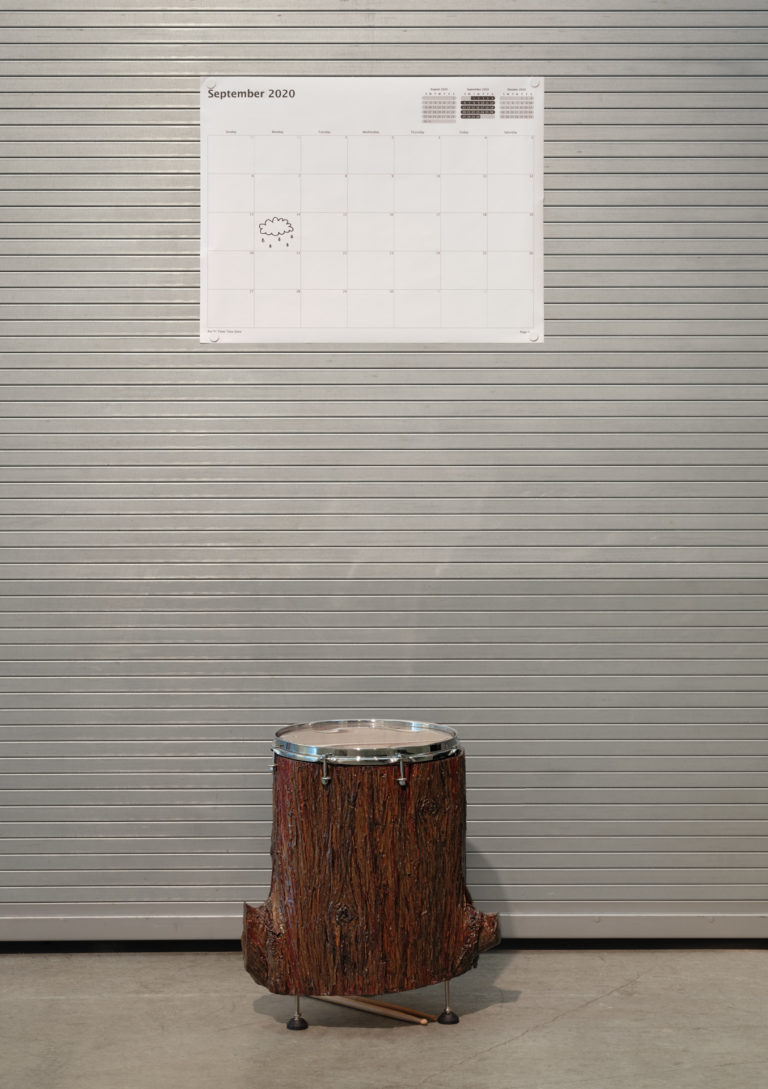
-
Germaine Koh
ArtistGermaine Koh is a Canadian artist based in Vancouver, unceded ancestral territories of the Musqueam, Squamish and Tsleil-Waututh First Nations. Her work often adapts familiar situations, everyday actions and common spaces to encourage connections between people, technology and natural systems. Her ongoing projects include Home Made Home (http://homemadehome.ca), an initiative to build and advocate for alternative forms of housing, and League (http://league-league.org), a participatory project using play as a form of creative practice. She was the City of Vancouver’s first Engineering Artist in Residence in 2018-20, and is scheduled to be the Koerner Artist in Residence at the University of British Columbia in 2021. In Summer 2020 she worked with the Belkin staff to help shape COVID-19 reopening protocols
Read More
Related
-
Exhibition
8 Sep – 6 Dec 2020
Soundings: An Exhibition in Five Parts
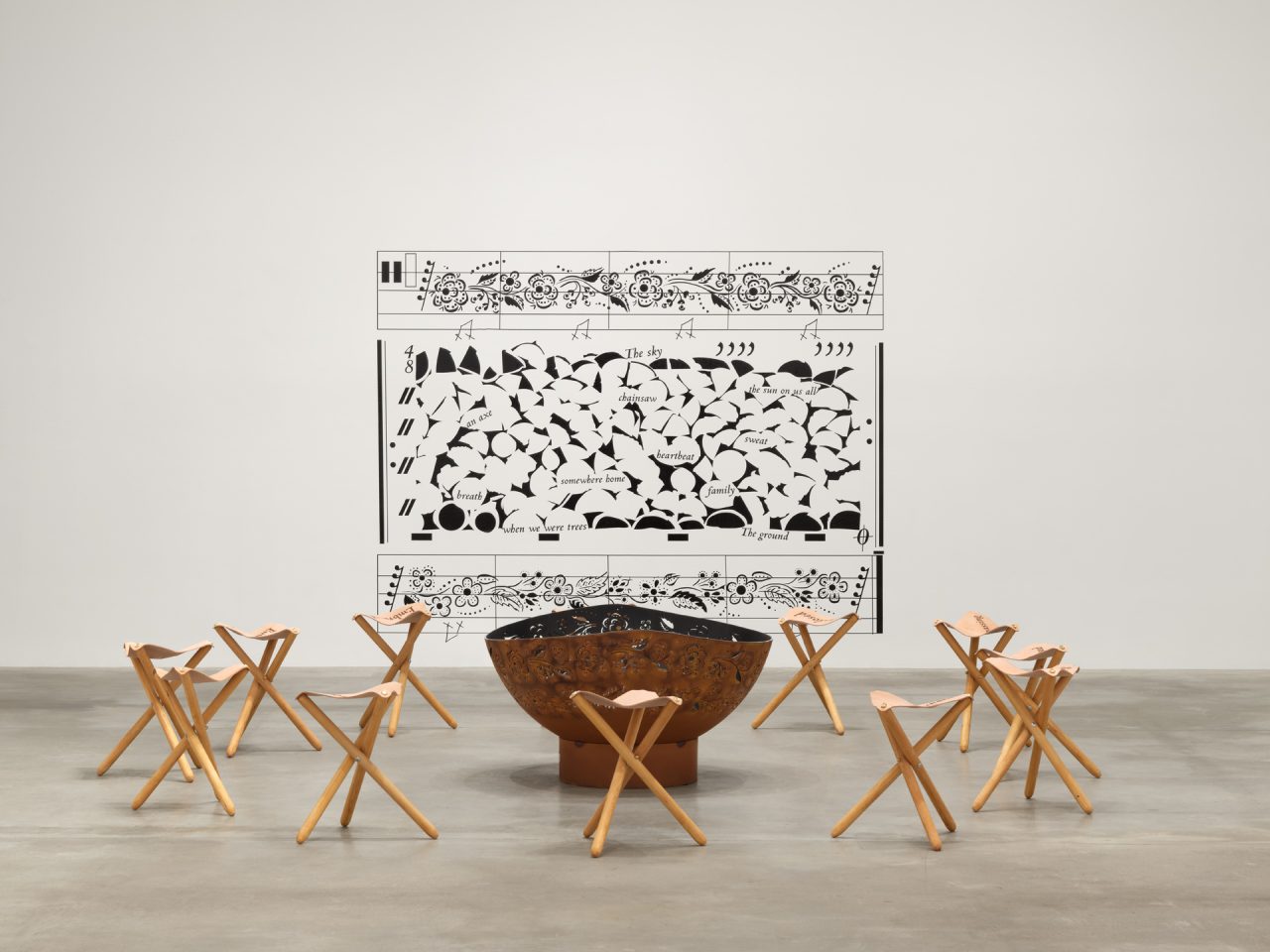
Soundings: An Exhibition in Five Parts features newly commissioned scores, performances, videos, sculptures and sound by Indigenous and other artists who respond to the question, How can a score be a call and tool for decolonization? Unfolding in a sequence of five parts, the scores take the form of beadwork, videos, objects, graphic notation, historical belongings and written instructions. During the exhibition, these scores are activated at specific moments by musicians, dancers, performers and members of the public, gradually filling the gallery and surrounding public spaces with sound and action. Curated by Candice Hopkins and Dylan Robinson, Soundings is cumulative, limning an ever-changing community of artworks, shared experience and engagement. Shifting and evolving, it gains new artists and players in each location. For this iteration on Musqueam territory, the Belkin has collaborated with UBC's Musqueam Language Program in partnership with the Musqueam Indian Band Language and Culture Department; School of Music; Chan Centre for Performing Arts; First Nations House of Learning and Museum of Anthropology to support the production of new artworks and performances by local artists.
[more] -
Event
10 Sep 2020
Soundings: Diamond Point and Coastal Wolf Pack
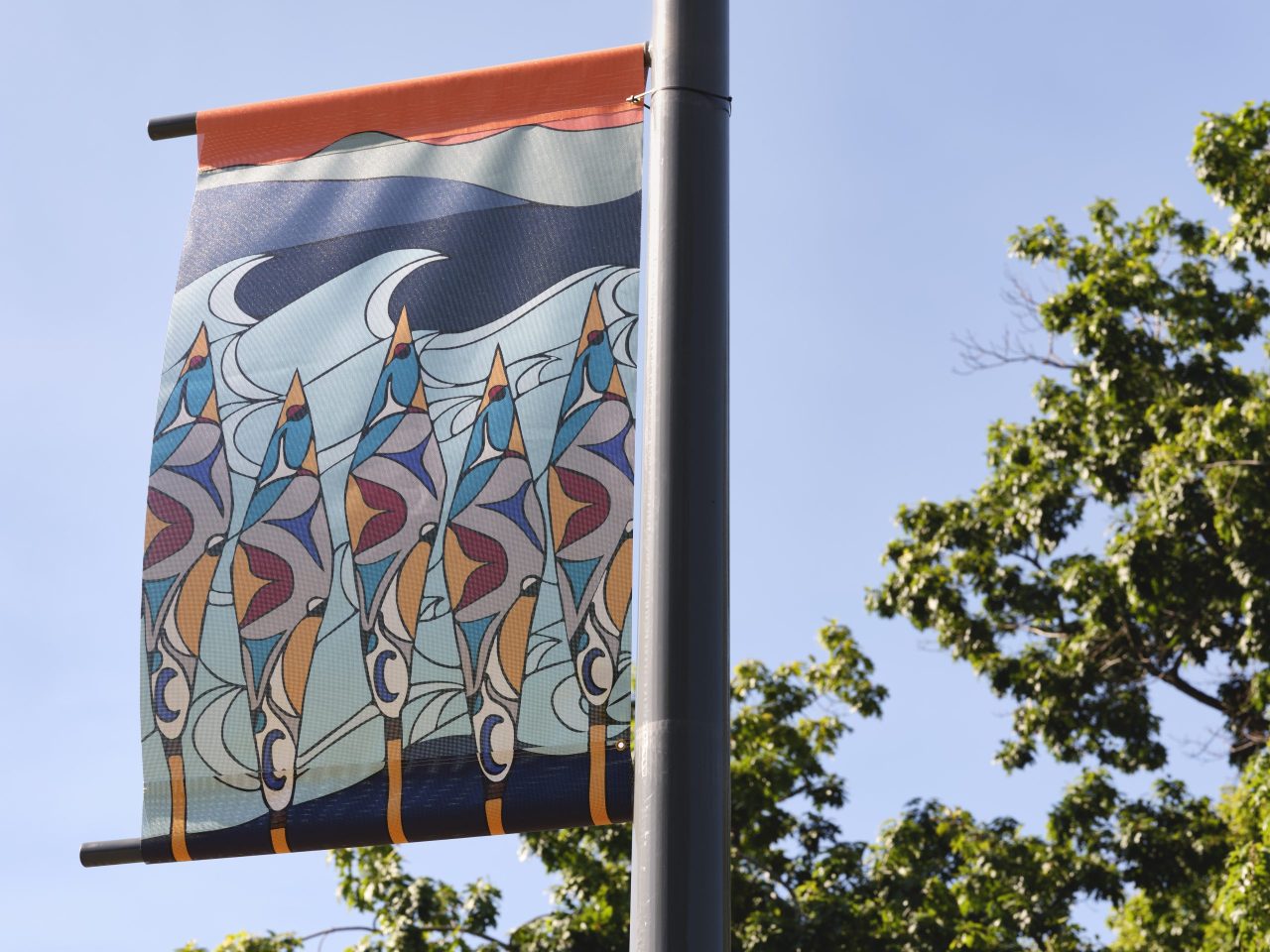
Forming two continuous lines on this part of the traditional, ancestral and unceded territory of the xʷməθkʷəy̓əm (Musqueam) people, wəɬ m̓i ct q̓pəθət tə ɬniməɬ by Diamond Point presents two images repeating in a sequence hung on the lampposts along UBC’s Main Mall from James Hart’s Reconciliation Pole to the plaza just beyond the Belkin.
[more] -
Event
8 Sep 2020
Soundings: Peter Morin and Parmela Attariwala
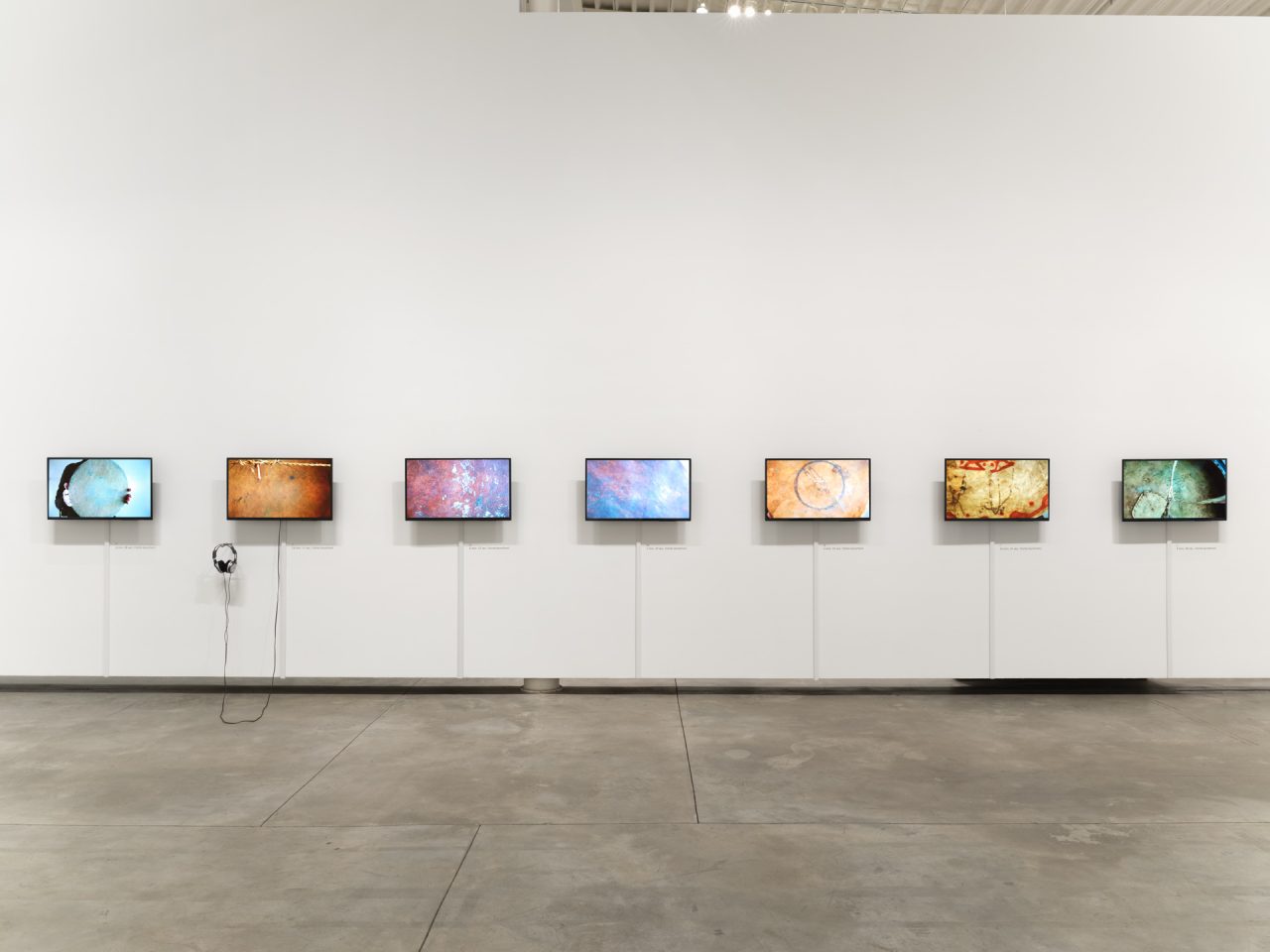
In Part One of NDN Love Songs, Peter Morin offers a score of instructions to musicians presented alongside seven video portraits. Part Two presents videos of recordings of previous iterations of the Soundings exhibition at Agnes Etherington Art Centre, Gund Gallery and Kitchener-Waterloo Art Gallery. In Part Three, Parmela Attariwala performs the score on the violin at the Belkin.
[more] -
News
31 Aug 2020
Soundings: Reading Room
The following is a list of resources related to Soundings: An Exhibition in Five Parts. The list of resources compiled here is not an official recommendation, but is rather a list of suggested readings compiled by Public Programs and graduate student researchers at the Belkin Art Gallery. These readings are intended to provide additional context for the exhibition and act as springboards for further research or questions stemming from the exhibition, artists, and works involved.
[more] -
News
08 Jul 2020
Germaine Koh: Crowd Shyness

In crown shyness, trees grow with distinct space between their crowns to avoid spreading pests, to avoid damaging their own fragile tips and to leave room for their peers. They make small, individual sacrifices for collective health.
[more] -
News
30 Nov 2020
Belkin x CRWR: Soundings
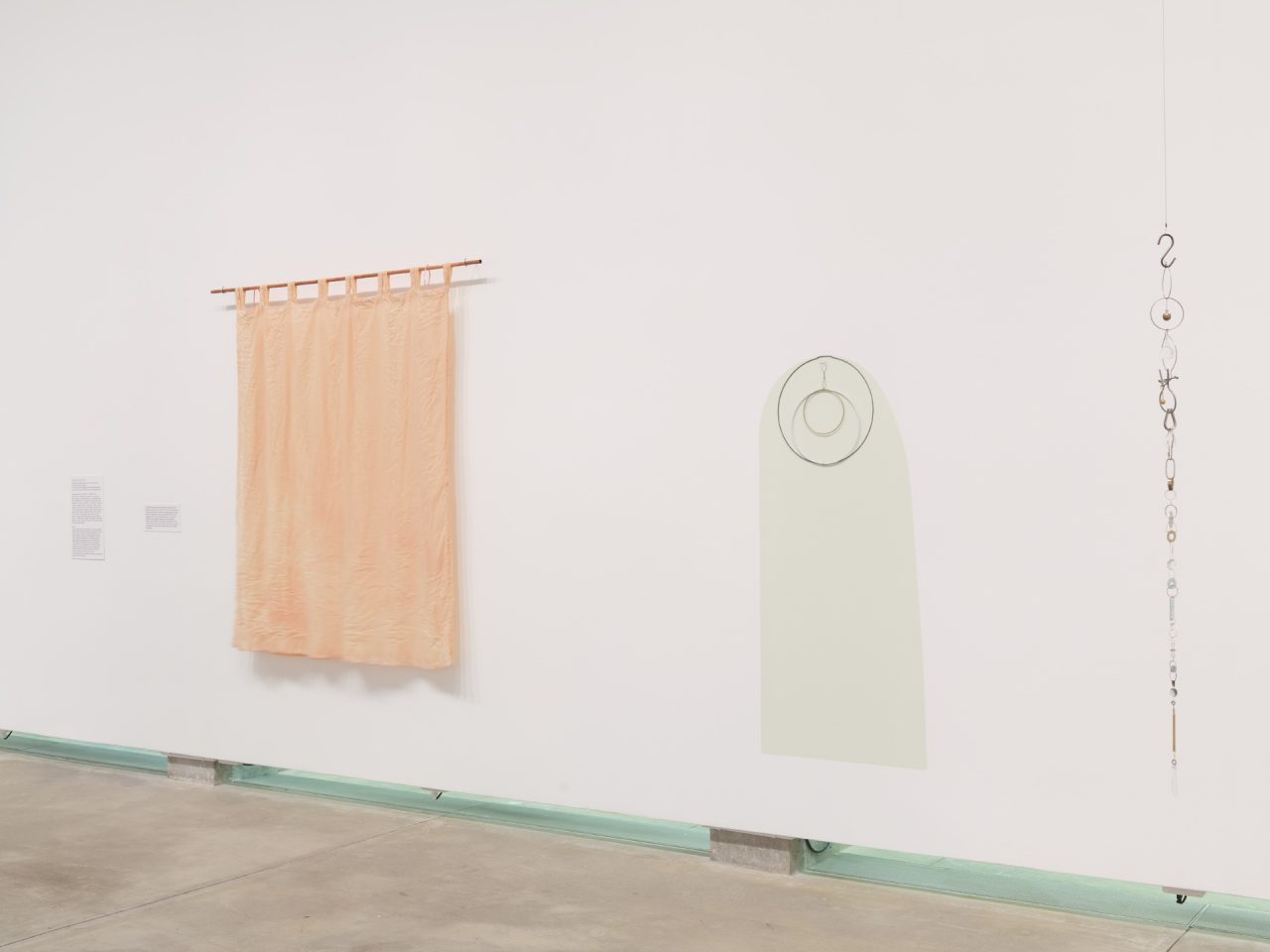
In response to Soundings: An Exhibition in Five Parts, a group of Creative Writing graduate students at the University of British Columbia have made a series of activities for visitors to take part in during their visits to the gallery. Thinking through the idea of a score as a call to respond, these activities range from sound walks to reflective worksheets to small group workshops.
[more] -
News
10 Dec 2020
Soundings: Marking Time
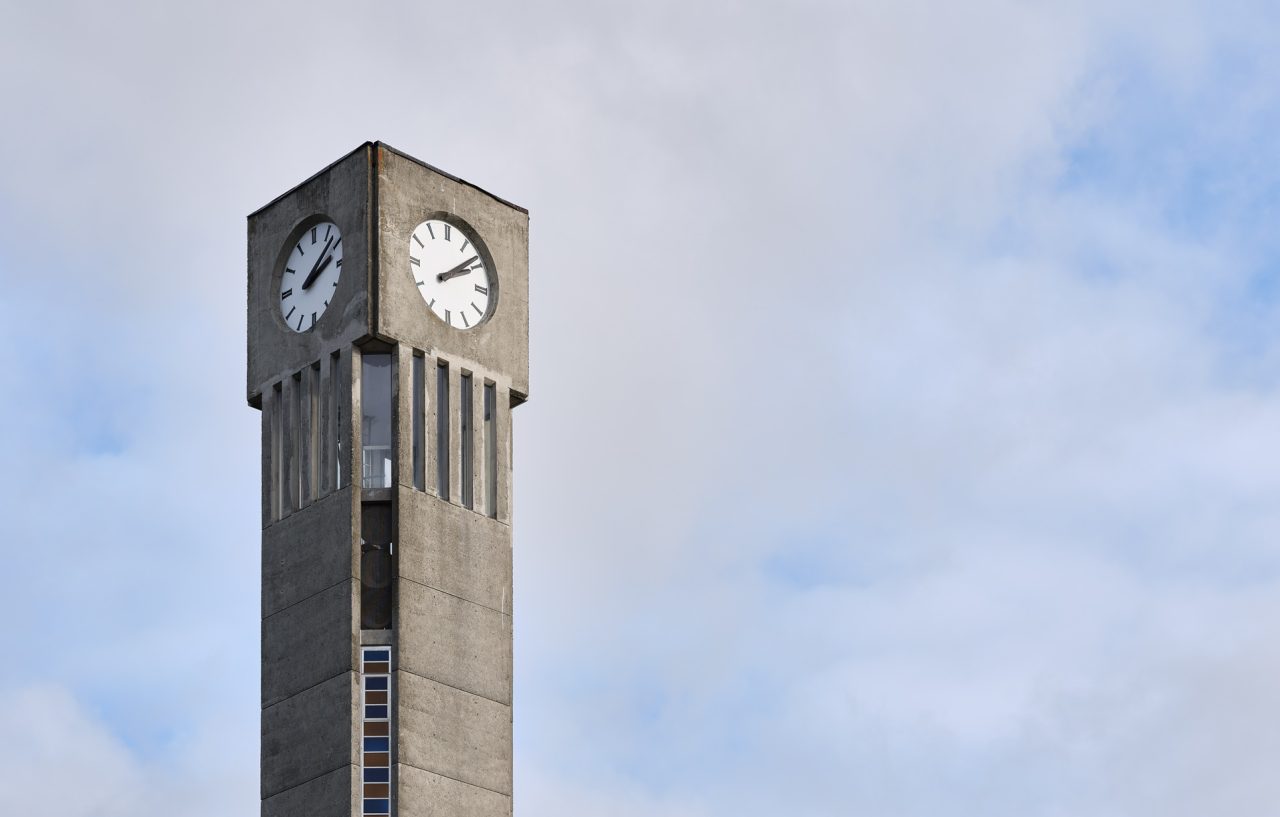 [more]
[more] -
Event
Sunday 8 Nov 2020 at 3 pm
Soundings: Camille Georgeson-Usher and Rachel Kiyo Iwaasa
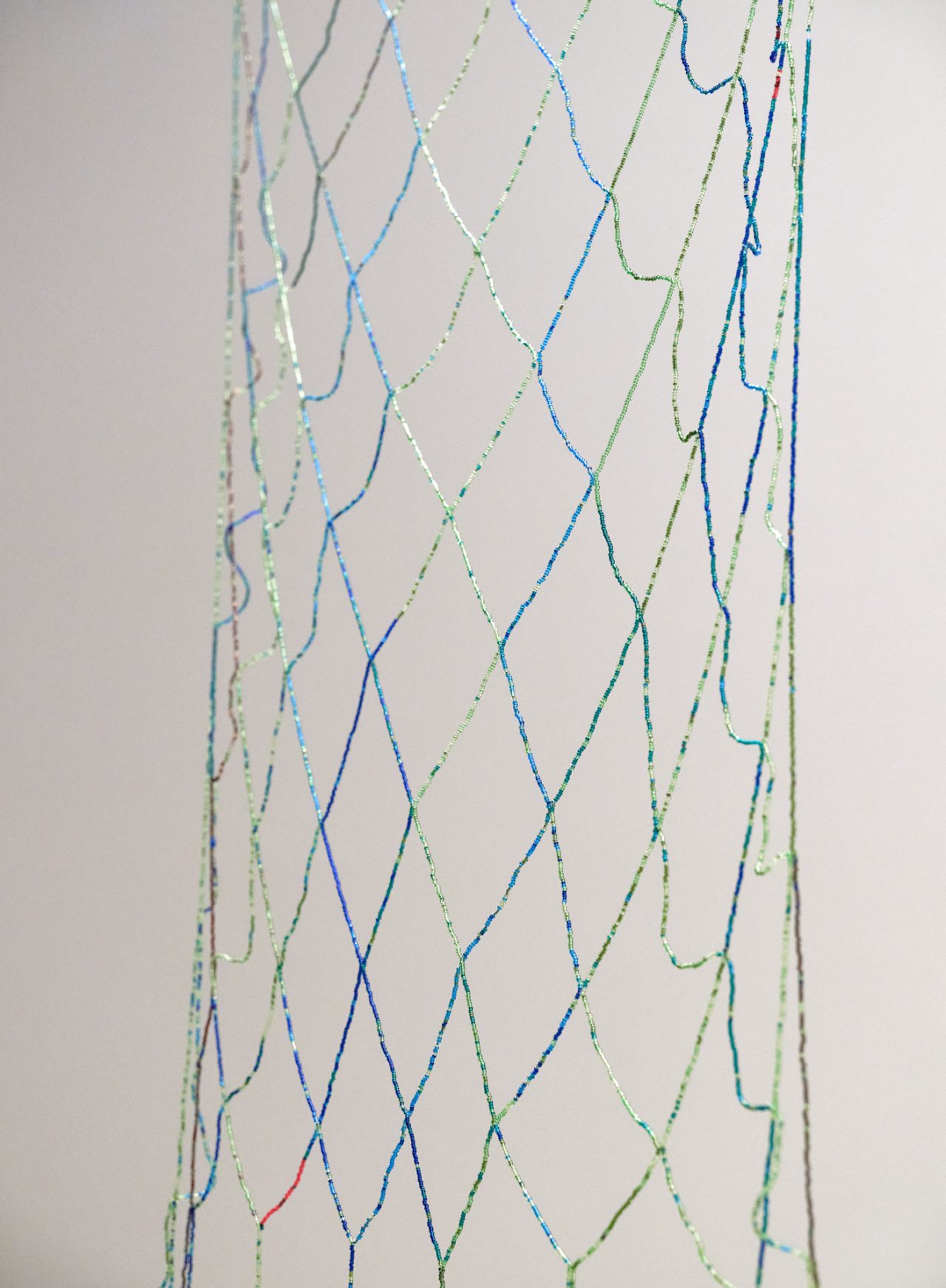
through, in between oceans part 2 by Camille Georgeson-Usher is a beaded installation, completed during the isolation of the Spring 2020 pandemic. The artist worked from home in Toronto, a departure from her intention to spend several months on Galiano Island, BC, where she was raised.
[more] -
Event
Soundings: Germaine Koh
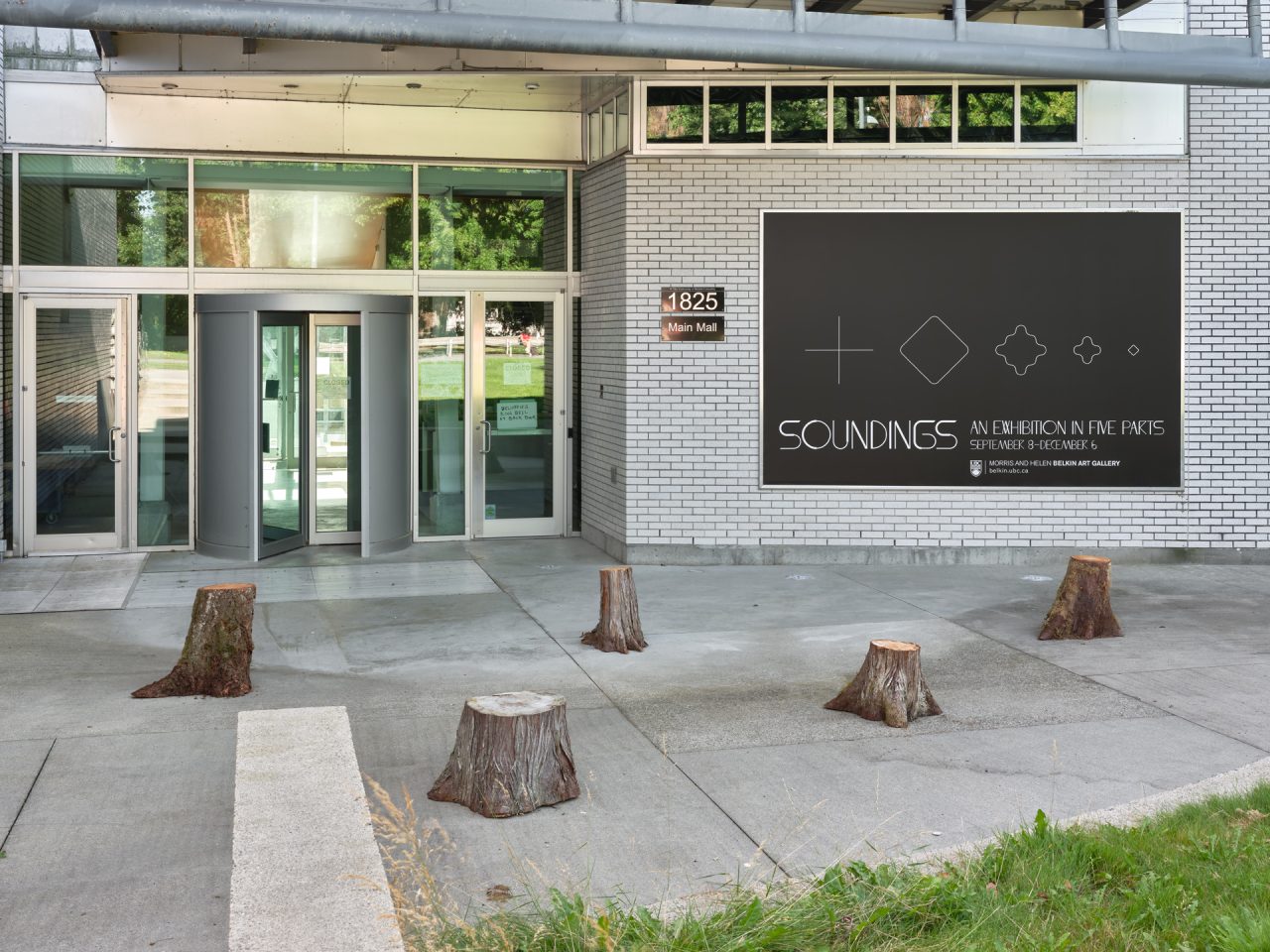
Germaine Koh’s drum is made from one of the cedar tree stumps she first brought to site for use as physical distancing stations. She worked with Belkin staff during Summer 2020 to develop COVID-19 safety and visitor interaction protocols that recognized the importance of collective care and teamwork.
[more] -
Event
8 Sep 2020
Soundings: Greg Staats
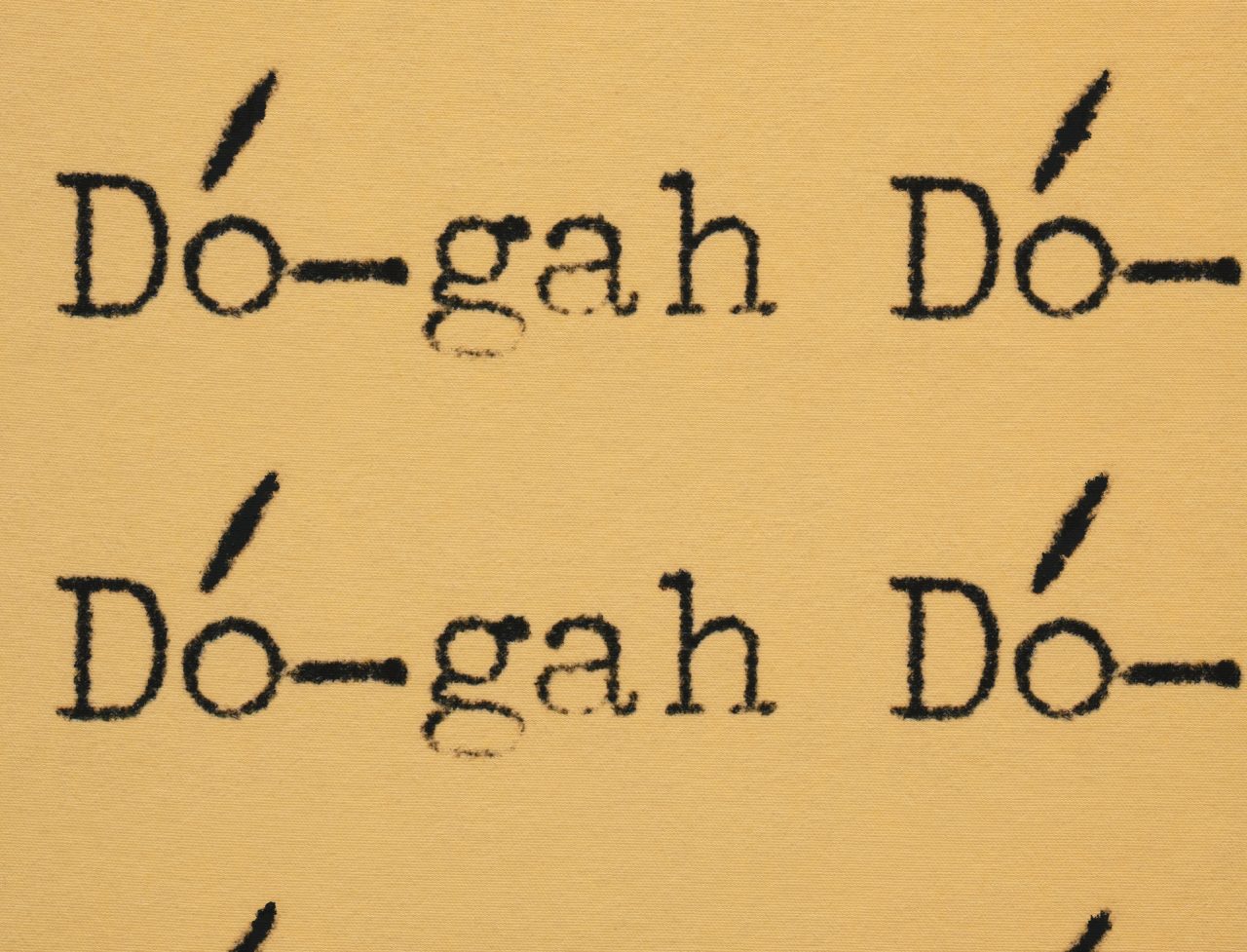 [more]
[more] -
Event
Wednesday 21 Oct 2020 at 3 pm
Wednesday 28 Oct 2020 at 3 pm
Wednesday 25 Nov 2020 at 2 pm
Wednesday 2 Dec 2020 at 3 pm
Sunday 6 Dec 2020 at 3 pm
Soundings: Olivia Whetung and the Ladner Clock Tower Carillon
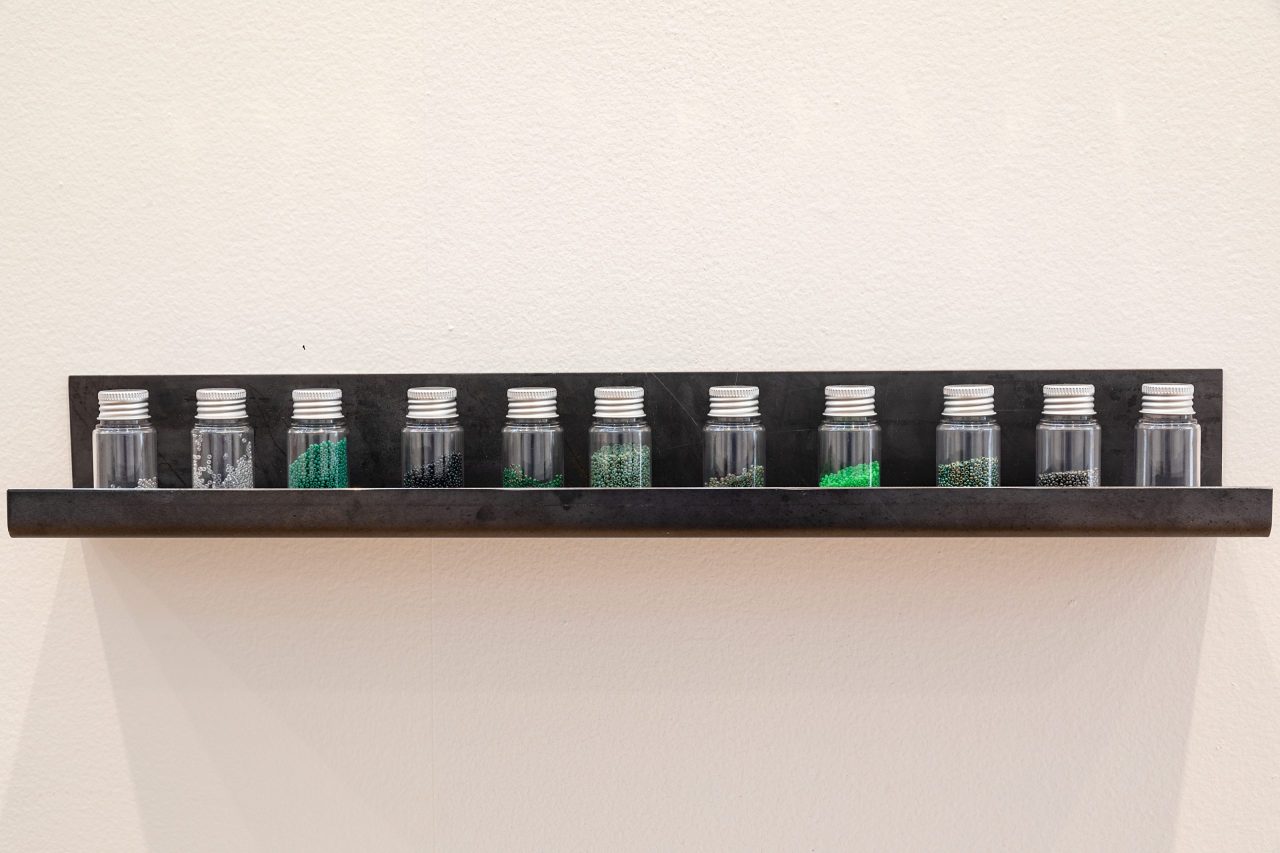
Whetung invites gallery visitors to pour different coloured beads from individual small jars into one large vessel, creating a layering of sounds as each bead joins the growing pile. Once the container is filled, the artist turns the amalgam of beads into an entirely new piece – a rectangular beadwork unique to the Belkin’s iteration of the exhibition.
[more] -
Event
8 Oct 2020 at 4 pm
Soundings: Raven Chacon and Symphonic Wind Ensemble
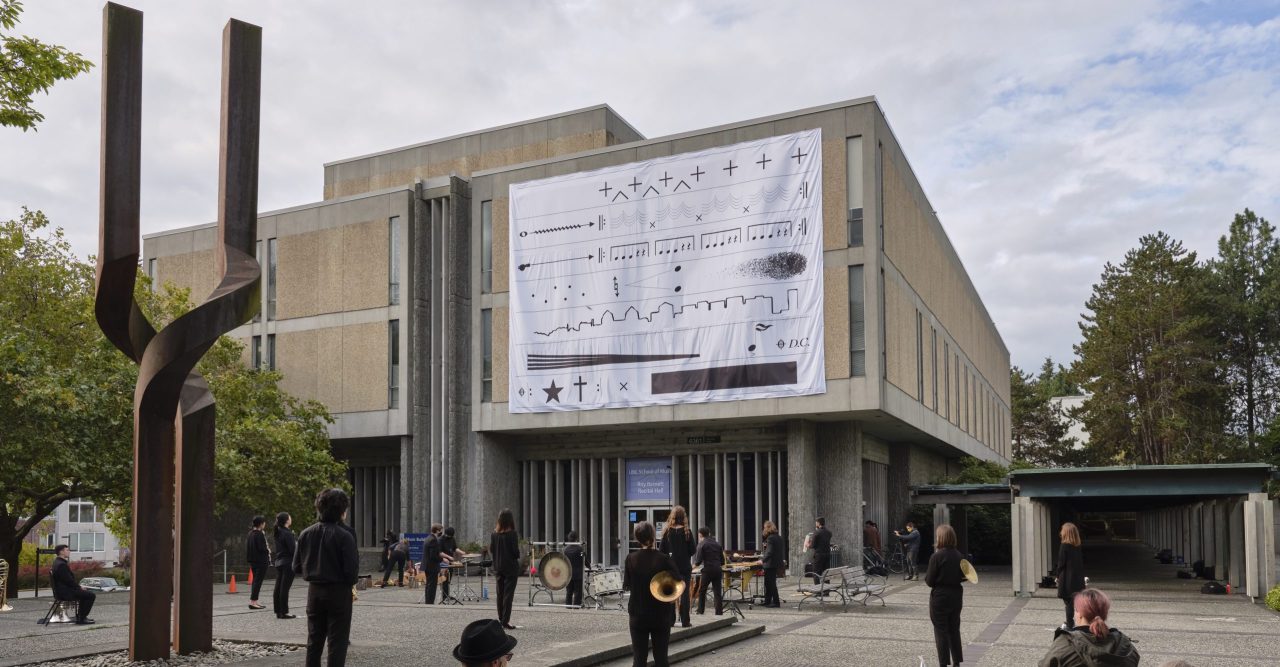
Around the corner from the Belkin Gallery, Raven Chacon's score American Ledger (No. 1) hangs on the exterior of the Music Building at 6361 Memorial Road, UBC. The score incorporates a traditional musical score with Navajo iconography and is to be performed by "many players with sustaining and percussive instruments, voices, coins, axe and wood, a police whistle and the striking of a match."
[more] -
Event
Monday 30 Nov 2020 at 4:30 pm
Soundings: Tania Willard and Melody Courage

Surrounded/Surrounding includes a wood-burning fire bowl, etched leather camp stools and a life-sized rendering of the artist’s wood pile in a graphic score. Written on the split logs and the spaces between them are references to the breathing, beating labour that creates what a fire needs, as well as the trees, sun, sky and ground that surrounds and creates all else.
[more] -
Event
Dec 2020
Soundings: UBC Contemporary Players Respond
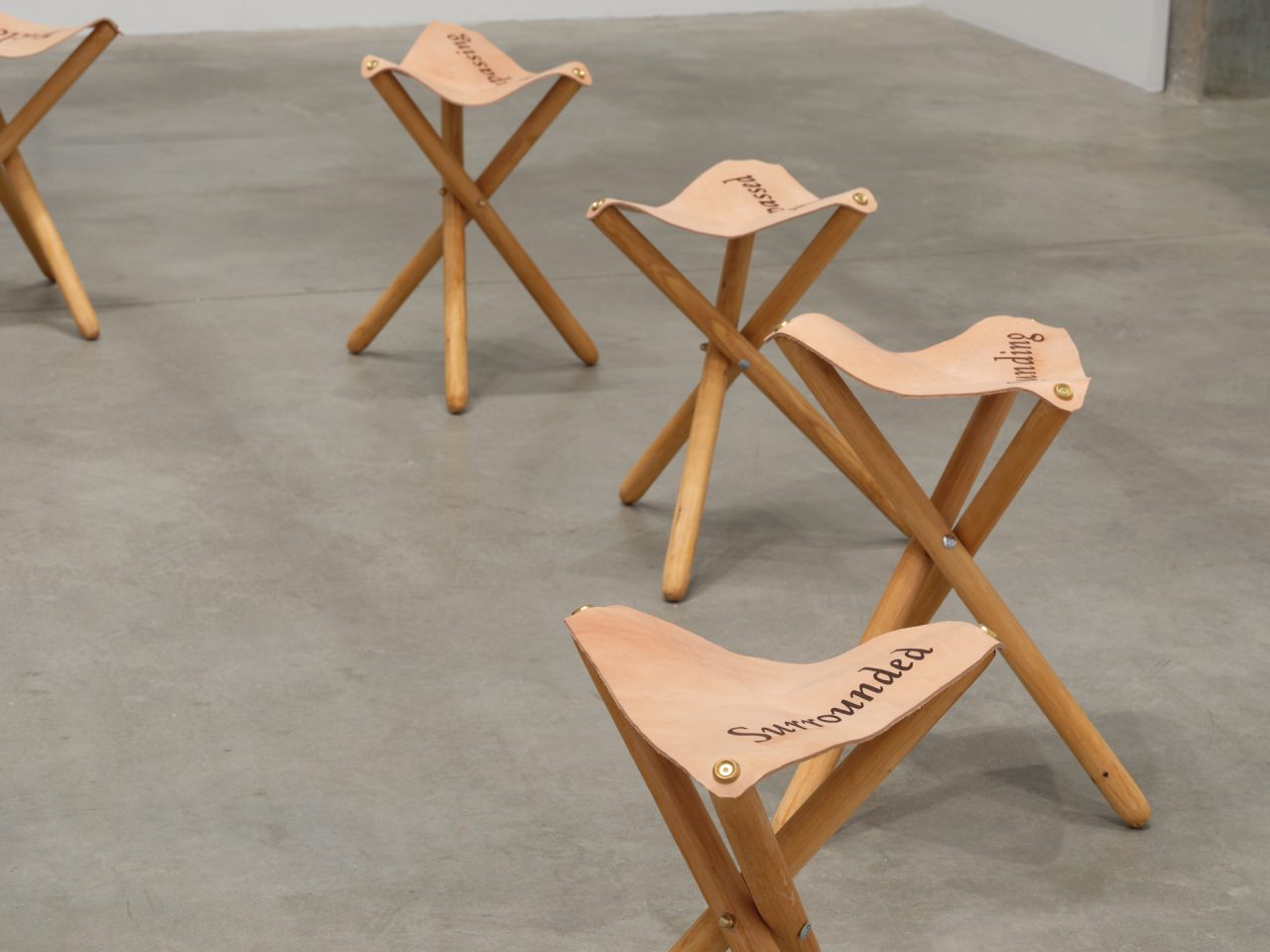
In lieu of a public concert at the Belkin as has occurred in recent years, musicians from UBC Contemporary Players chose a work by a Canadian composer to perform in an empty gallery, responding to the works of Soundings: An Exhibition in Five Parts. Videos of these performances are shared here for reference, research, and enjoyment in perpetuity. Soundings asks how a score can be a call and a tool for decolonization. The exhibition's corresponding investigations take at their centre questions of embodiment and subjectivity, of calls and responses. What are the practical matters of embodied decolonization, and how can we practice them? How does embodiment facilitate unlearning, unknowing, and the visioning of Indigenous ontologies?
[more]